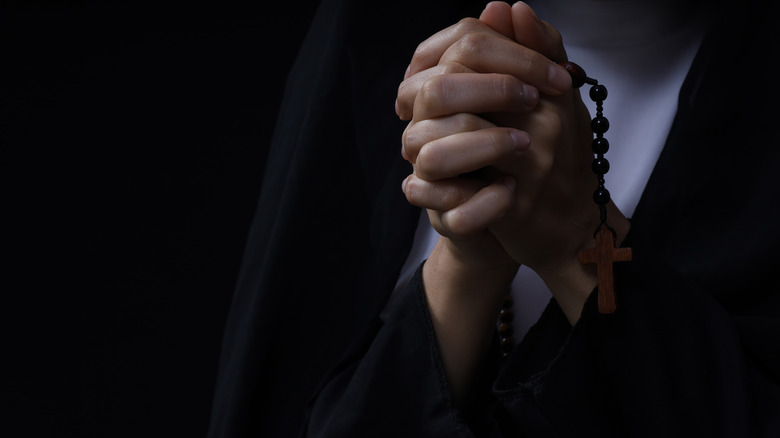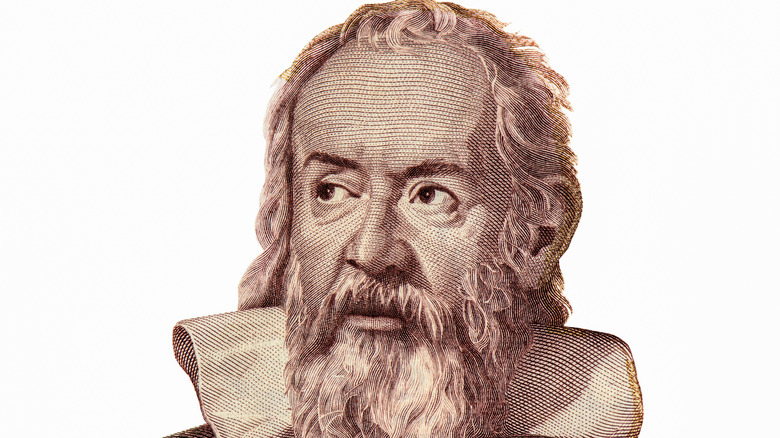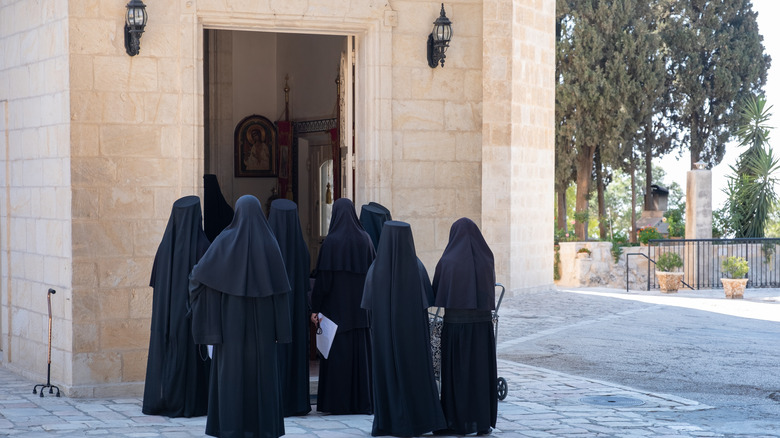The Real Reason Galileo Galilei's Daughters Became Nuns
The father of modern science, Galileo Galilei, fathered two daughters who became nuns, and the irony of it is not lost on history. While both daughters took the veil at a poor convent outside of Florence, Italy, when they turned 16, Galileo was eventually branded a heretic, persecuted by the Roman Catholic Church during the Inquisition for his scientific writings (via The Galileo Project). Galileo's oldest daughter, Virginia, was born out of wedlock with his housekeeper Marina Gamba of Venice in 1600, according to The Galileo Project, as was his second daughter, Livia, who soon followed in 1601. The couple, who never married, possibly over Galileo's financial hardships, also had a son, Vincenzo, in 1606.
Galileo's children were born in Padua, where he worked at the local university. There are somewhat conflicting reports on when and how both his daughters arrived in Florence. Virginia may have been taken to Florence by her grandmother, Giulia Ammannati Galilei, when she was 9 years old (via the Linda Hall Library) while her father and younger sister followed a year later. According to other historical texts, though, Galileo took both girls to Florence with him when he moved there, leaving his 4-year-old son behind with his mother in Padua. The grand duke of Tuscany, Cosimo II de' Medici, rewarded Galileo with an appointment to the Florentine court as mathematician and philosopher after he wrote "The Starry Messenger," a wildly popular book about his celestial discoveries.
Galileo's daughters become nuns
Whether one daughter was already there or if both were with him on the journey, no matter, he arrived at the Florentine court, in his native land, in 1610 (via Britannica) and settled in with his daughters. However, Galileo had a problem. He loved his daughters, but in Florentine society at that time, unmarried women had two main options, either marry or enter a convent. In the case of Galileo's daughters, though, whether because they were illegitimate or because Galileo was unable to provide enormous enough dowries for a suitable match, they were deemed unfit for marriage (via Scientific American).
When the girls were 12 and 13 years old, Galileo found places for them at the Poor Clare Convent at San Matteo in Arcetri, a few miles away from Florence (via the Linda Hall Library), where they remained for the rest of their lives. After taking the veil, Virginia Galilei became Suor Maria Celeste and Livia Galilei was named Suor Arcangela.
Galileo loved his daughters
Despite Galileo's eventual troubles with the Catholic Church, he maintained a close relationship with his older daughter. Although little is known about the life of either daughter, more is known about Maria Celeste. Between 1623 and her death in 1634, about 120 letters to her father survived. According to The Galileo Project, these letters reveal a loving daughter who cared about her father. The convent was very poor, and Maria Celeste wrote to her father about the bad food and conditions. Galileo, who eventually moved closer to the convent to be near his daughters, bought food and supplies for the nuns and helped with repairs.
The letters also indicate that Celeste was well-educated and that she ran her father's household when he was on trial in Rome. "Intelligent and industrious, Suor Maria Celeste developed an expertise in medicine, aided in part by the physicians who visited the sick nuns in the infirmary, and also by her own research, experimentation, and experience as the convent's apothecary," per the Linda Hall Library's description. She was also known to have helped her father in transcribing his scientific manuscripts. When Maria Celeste died of a sudden illness at the age of 34, a grief-stricken Galileo wrote to a correspondent in Paris, "I had two daughters who were nuns and whom I loved dearly, but the eldest in particular who was a woman of exquisite mind, singular goodness, and most tenderly attached to me."


